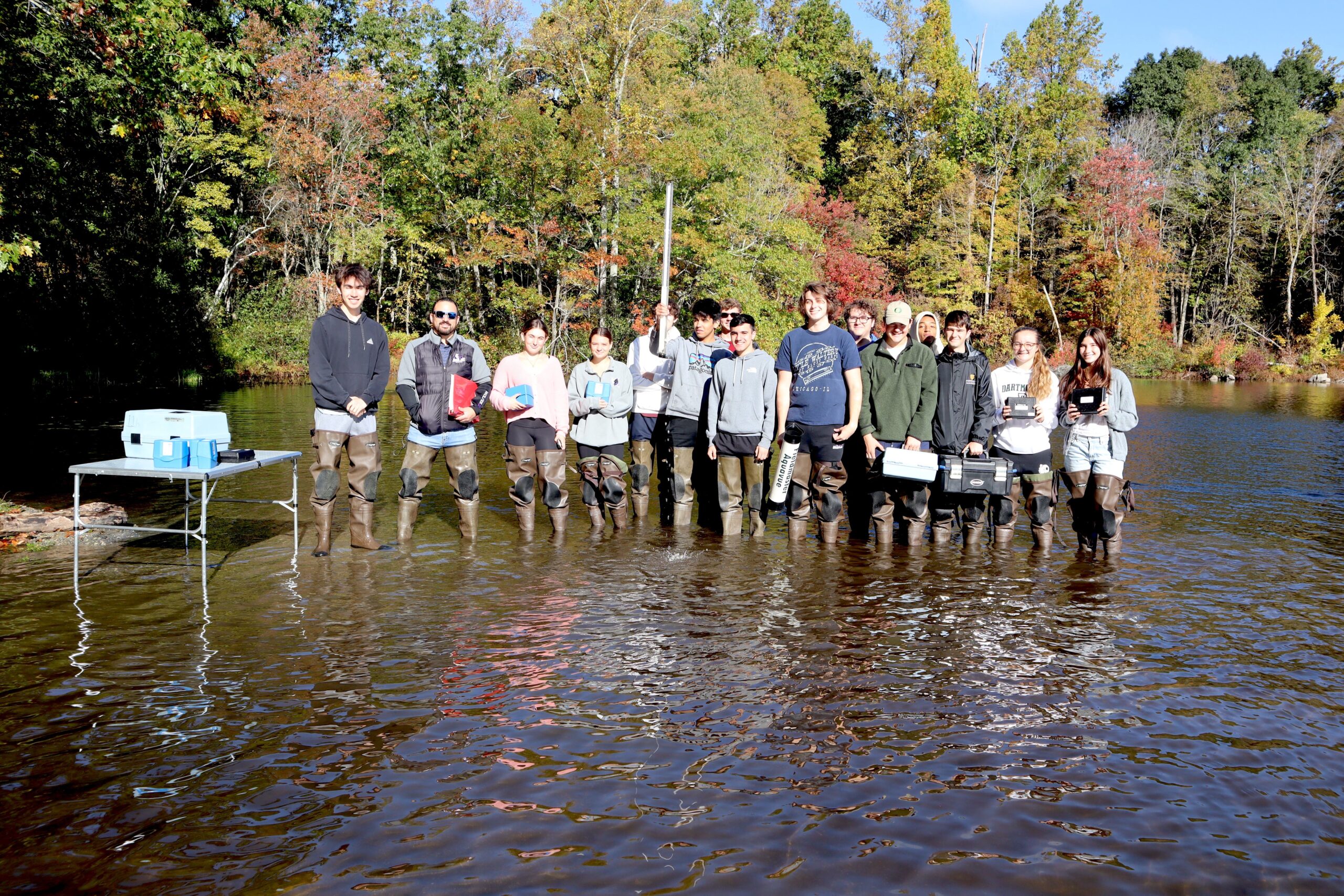CROSS RIVER, NY — One of the best hopes for the future of protecting our environment might be closer to home than we realize.

From the Katonah-Lewisboro School District
Brooke Habinowski and Olivia Ofer wade into Lake Waccabuc carrying small vials to fill with water. Back at the worktable, the two seniors will test the samples for nitrates and phosphates.
“Let’s go out as far as we can,” Habinowski said. When the water nears the tops of their waders, they pause to enjoy the lake sparkling in the morning sun, rimmed with red and gold foliage. It is Monday morning, second period, and look where they are!
Local fieldwork in Katonah-Lewisboro’s wealth of open space is what makes John Jay’s AP Environmental Science (APES) one of the school’s signature classes. Taught by Joe Gaudio and Matthew Funnell, it catches students who already love nature and develops their skills in observation and analysis.
The experiential class is also rigorous; students are able to earn college credits for the elective through the University in the High School Program at SUNY Albany.
Already this year, APES students have tested water samples at Ward Pound Ridge Reservation,
participated in sustainable agriculture at Hilltop Hanover Farm, observed the Hudson River on the
Clearwater, and explored Sterling Mine, a no-longer used zinc mine. Later that week, they’d participate in a hawk watch at Butler Memorial Sanctuary and try their hand at bird banding at Westmoreland Sanctuary. In the spring, the students will analyze centuries-old morbidity patterns at the area’s historic cemeteries. And more.
At Lake Waccabuc, students use professional grade water sampling equipment — tubes, gauges and meters — to test for levels of dissolved oxygen, pH, turbidity and nitrates.
The teachers emphasize that water from the lake flows into the New York City reservoir system.
“This is someone’s drinking water,” Dr. Linda Burke, the teacher who developed the syllabus and now participates as a chaperone, said. “That’s why it’s very important that we monitor its quality.”
Back on the bus, the students are happy to chat about the class.
Everyone loves the outdoor aspect of APES.
“Going outside is great break in the day,” Ofer said.
For Habinowski, the class is part of a larger sequence of biology courses. “It’s widened my perspective on the environment and conservation,” she said.
Senior Brandon Lasota said that he plans on studying science in college. He and his team noticed that the levels of dissolved oxygen were lower near shore, and the levels of phosphates higher, possibly because of the number of dead leaves in the shallow water.
The class reviews its findings from Lake Waccabuc and completes a Water Quality Inventory using guidelines provided by the New York State Department of Environmental Conservation. The results find the lake to fall in good range.
